Do you have a question about the Mindray BeneHeart C2 and is the answer not in the manual?
| Device Type | Automated External Defibrillator (AED) |
|---|---|
| Waveform | Biphasic Truncated Exponential (BTE) |
| Operating Temperature | 0°C to 50°C |
| Display | LCD |
| Weight | 2.2 kg (without pads) |
| Energy Selection | Automatic, based on patient impedance |
| Energy Levels (Adult) | 150 J, 150 J, 200 J |
| Energy Levels (Child) | 50 J, 70 J |
| Voice Prompts | Yes |
| CPR Guidance/Feedback | Yes |
| Self-Testing | Daily, weekly, and monthly self-tests |
| Data Recording/Storage | Yes |
| Data Transmission/Connectivity | USB |
| ECG Channels | 1 |
| NIBP Measurement | No |
| SpO2 Measurement | No |
| Temperature Measurement | No |
| Pads Type | Pre-connected |
Defines hazard levels (Danger, Warning, Caution, Note) for safe operation.
Highlights imminent hazards leading to death or serious injury.
Alerts to potential hazards or unsafe practices leading to death or injury.
Warns of potential hazards leading to minor injury or product damage.
Introduces the BeneHeart C & S series AED and its models.
Specifies the target users and conditions for the defibrillator.
Describes the physical components of the main device.
Outlines safety precautions before installing and using the equipment.
Covers the process of setting up the equipment.
Guides on how to attach the electrode pads to the equipment.
Highlights critical safety precautions during equipment operation.
Explains the elements shown on the AED's screen interface.
Step-by-step guide for responding to a patient rescue scenario.
Instructions for performing Cardiopulmonary Resuscitation.
Important safety warnings related to battery usage and handling.
Details the on-screen indicators for battery charge level.
Step-by-step guide for replacing the device's battery.
Introduces the importance of regular maintenance and testing.
Critical safety precautions for maintenance procedures.
Details recommended maintenance tests and their frequencies.
How to perform a user-initiated test on the equipment.
Details the safety standards and classifications of the equipment.
Details screen type, size, resolution, and viewing settings.
Technical specifications for the defibrillation function.
Describes methods and criteria for rhythm analysis and evaluation.
Official statement of compliance with relevant EU directives for radio equipment.

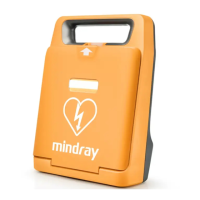


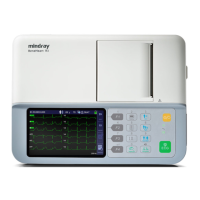
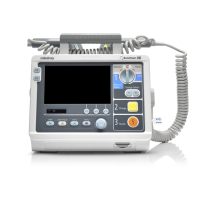


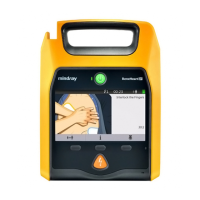
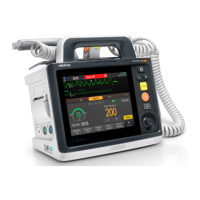


